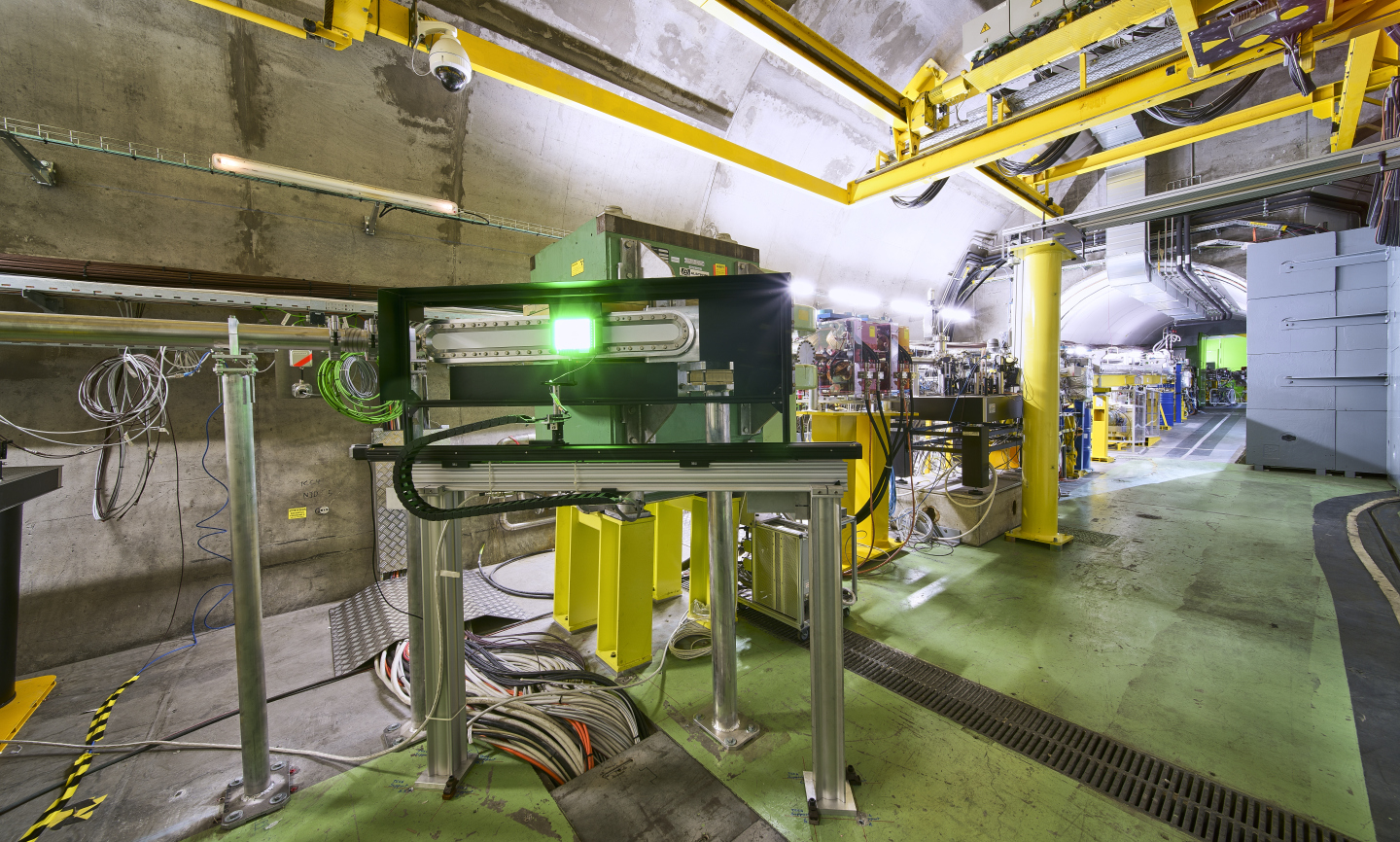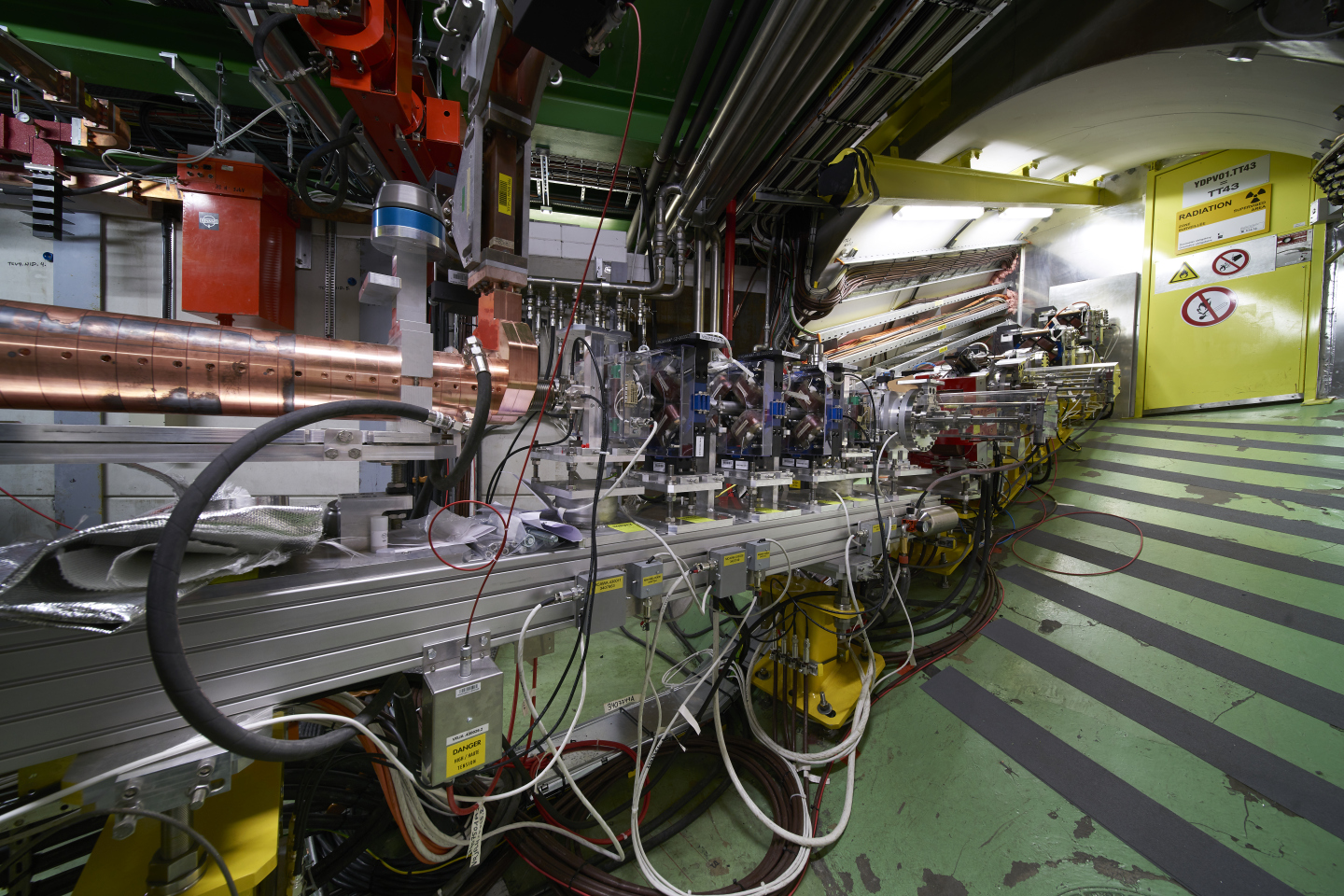The Challenge of Interfacing the Primary Beam Lines for the AWAKE Project at CERN
AWAKE Status Report
AWAKE: Advanced Proton Driven Plasma Wakefield Acceleration Experiment at CERN
The AWAKE Experimental Facility at CERN
Proton-driven plasma wakefield acceleration: a path to the future of high-energy particle physics
An $ep$ collider based on proton-driven plasma wakefield acceleration
AWAKE: to high energies in a single leap
Case Studies in Space Charge and Plasma Acceleration of Charged Beams
Preliminary Study for an RF photocathode based electron injector for awake project
Proton-driven plasma wakefield acceleration: a path to the future of high-energy particle physics
Feasibility Study of the Awake Facility at CERN
Pre-Excitation Studies for Rubidium-Plasma Generation
Short High-Intensity Bunches for Plasma Wakefield Experiment AWAKE in the CERN SPS
Beam Transfer Line Design for a Plasma Wakefield Acceleration Experiment (AWAKE) at the CERN SPS
AWAKE Design Report: A Proton-Driven Plasma Wakefield Acceleration Experiment at CERN
Bunch rotation tests at SPS flat top for the AWAKE experiment
Learn More
Edda Gschwendtner, CERN AWAKE Project Leader, explains the concept of Proton Driven Plasma Wakefield Acceleration at TEDxCERN. A version of the talk with French subtitles is available here.
AWAKE achieves first ever acceleration of electrons in a proton-driven plasma wave
AWAKE is the world's first proton-driven plasma wakefield acceleration experiment. It explores the use of plasma to accelerate particles to high energies over short distances.
AWAKE uses a laser, a bunched proton beam and a plasma cell to accelerate bunches of electrons. Dipole and quadrupole magnets along the beam lines guide long proton bunches and short electron bunches towards the plasma cell. To observe accelerated electrons and measure many different beam parameters, the AWAKE beamline is equipped with a vast array of screens and imaging stations. The AWAKE line ends with a scinitillating screen that shows the accelerated electrons as light spots on the right hand side of the screen.
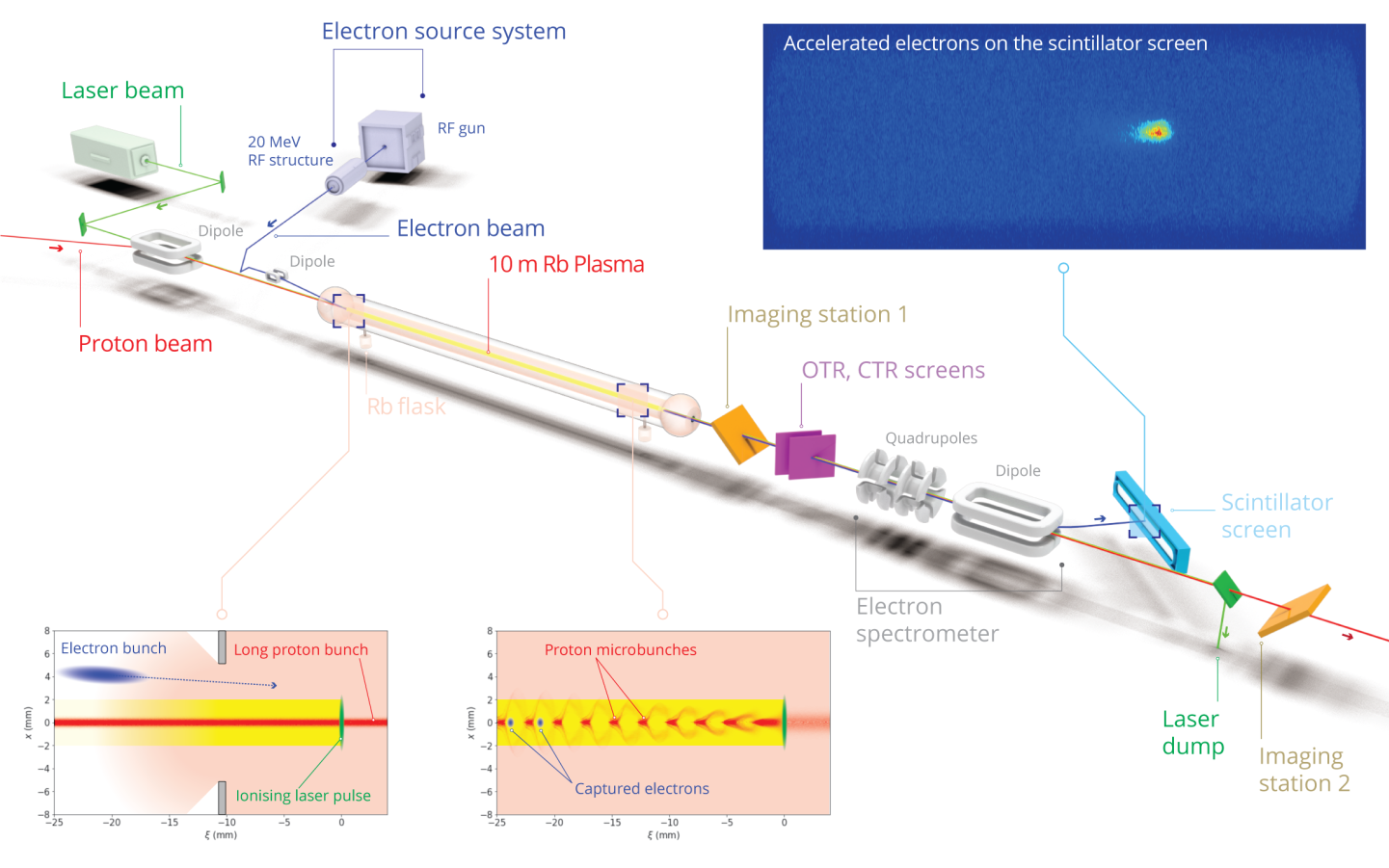
Layout of the AWAKE experiment
More info on the AWAKE experiment:
- AWAKE explained to the general audience
- AWAKE explained on CERN's experiments web page
- AWAKE accelerates electrons!
Contact us:
Tunnel
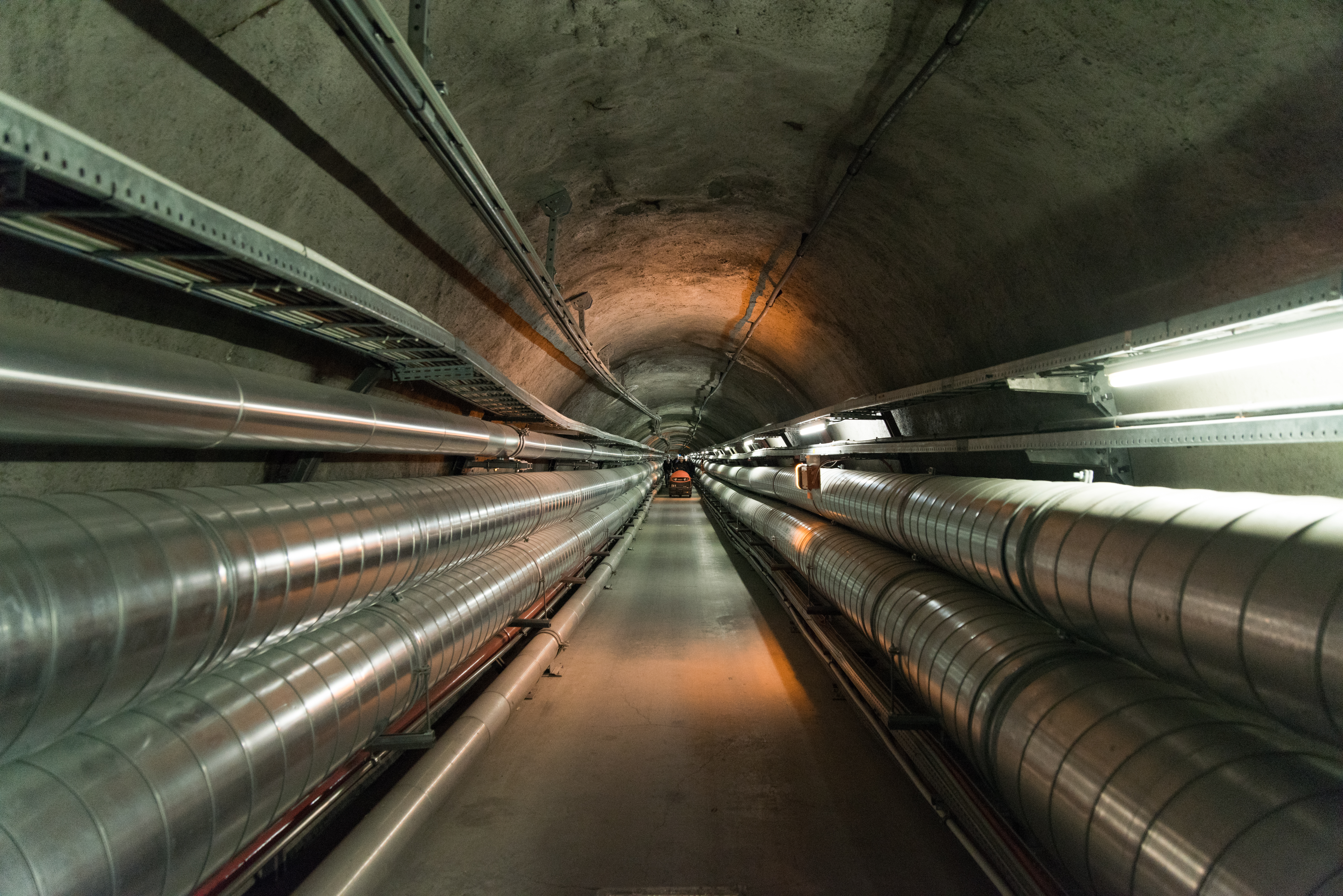
Electron beam line

Spectrometer screen
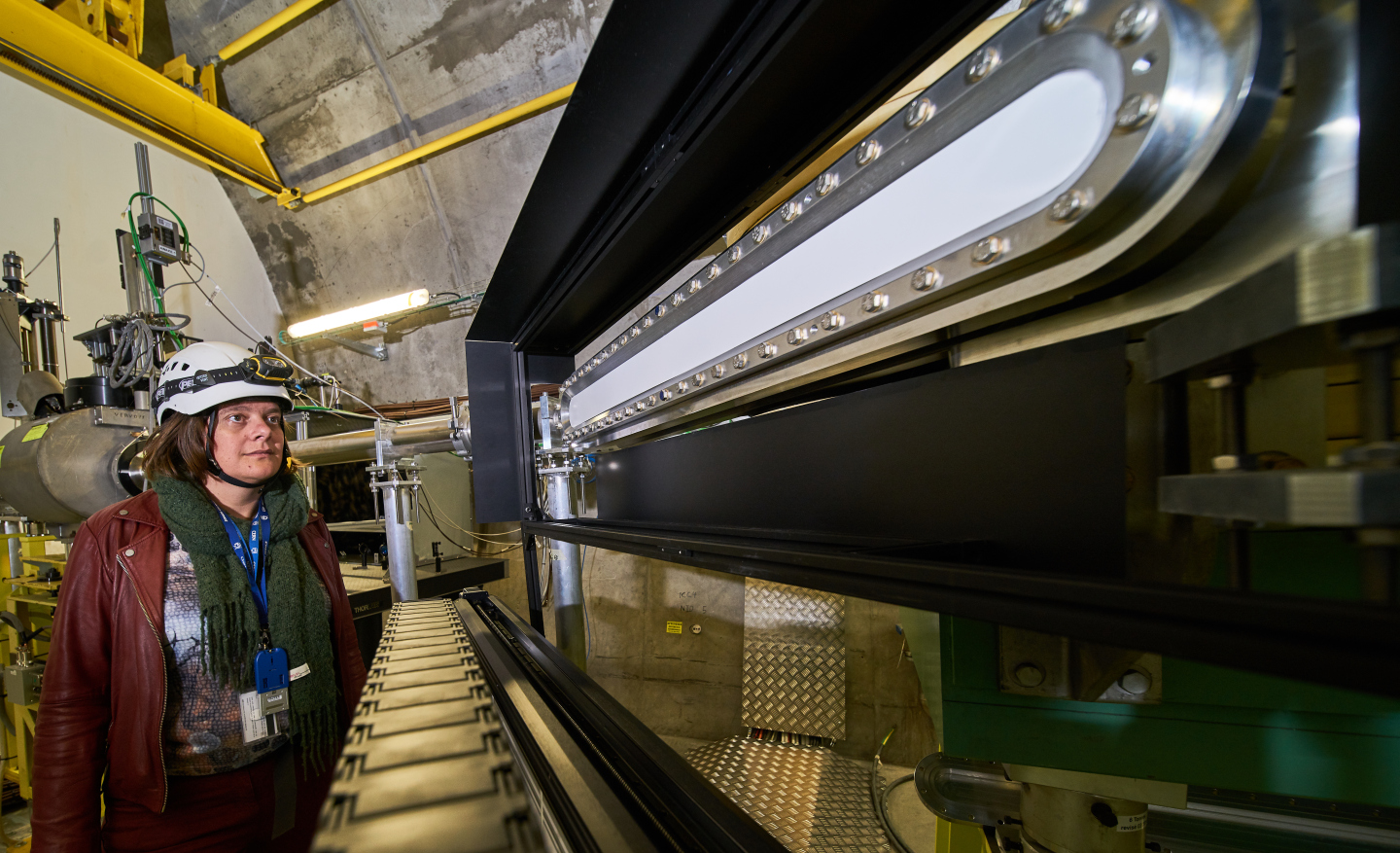
Spectrometer screen
